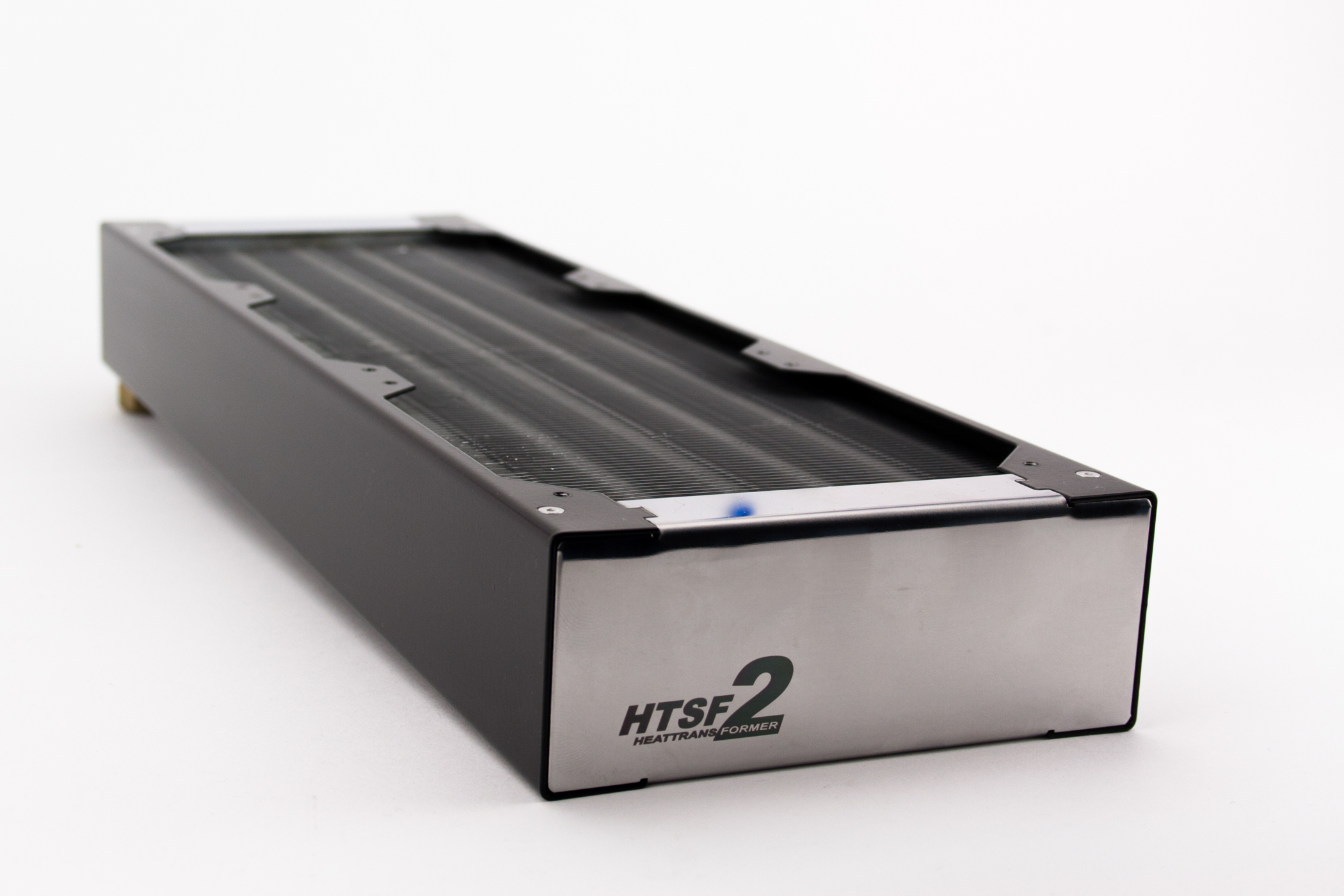Using the data compiled from the HTSF2 thermal testing I have compiled the following tables in an attempt to show another way how the HTSF2 performance varies against itself at the flow rates and fan speeds tested. Let’s first look at the raw W/10DT data we will be using for this:
Effectively these show percentage gains relative to a reference point. It’s an interesting way to show gains/losses while changing a variable. This first table shows performance gain or loss relative to 1.0GPM flow rate:
This shows that increasing flow to 1.5GPM has less gain than lowering flow to 0.5GPM.
We can also focus on 1300RPM as our reference and see how much gain or loss in performance we get by changing fan speed:
As expected the change is dramatic.
The next plot references 0.5gpm & 750rpm and is quite effective at showing performance gains against our lowest and slowest test point.
Both this and the next plot are showing the same data but with different reference points. They try and give an indication into the tuning of the radiator and how air flow and coolant flow are linked. If you raise one high enough you will be limited by the other. This plot uses the 1300 RPM and 1.0 GPM as our reference point to show both effects concurrently:
So from the data above we can get a very good idea of how the HTSF2 radiator performs relative to itself. But there is a large selection of 360mm radiator models to choose from, released from numerous manufacturers. So, we need to start comparing performance between them. To see how the radiator performed against the other radiators in this group I have included the averaged flow rate comparison charts from the Round Up. We know that the flow rate has little impact on thermal performance so averaging of the 3 flow rate results gives us a good look at head to head performance at the rpm speeds tested at with even less error.
Let’s start off with the Push only data:
At 750RPM the HTSF2 is starting off strong. Clearly this radiator with it’s low FPI and tube structure is optimized for low airflows.
By 1300 RPM it’s already dropped off to the middle of the range.
Surprisingly at 1850RPM it still holds strong in the middle of the pack.
Now let’s look at push/pull – an area that we would expect other radiators to do better with:
This time the HTSF2 starts off in the middle of the pack.
1300RPM turns in the HTSF2’w worst performance so far. It is firmly below average now.
Again at 1850RPM it holds it’s ground.
If we select only 1GPM flow rate data then we can combine push and push/pull data on the same plots. In order to make this less confusing we use different colors to represent push and push/pull:
At 750RPM the HTSF2 in push is already beating several push/pull setups.
At 1300RPM not much changes, the worst push/pull setups are still much worse than the HTSF2 in push, while the leading push radiator has just overtaken the HTSF2 in push/pull.
At 1850RPM the trends continue with more overlap still.
From all of these results we can create a “master performance factor”. The radiator with the best cooling ability (W/10ΔT) at each gpm/rpm combo was awarded a score of 100, and each other radiators W/10ΔT result was scored as percentage of the top performer:
From this we can see that the HTSF2 performed best (comparatively) at the lowest fan speed, falling further behind as the fan speed increased. In addition it seems to be quite sensitive to flow rate in comparison to other radiators. This is surprising given how restrictive the radiator is – usually a restrictive design is made to work well at low flow rates.
Then all these percentage scores were averaged giving us the Averaged Performance Factor of each radiator. This way of looking at the comparison takes away any advantages that a radiator may have at higher or lower fan speeds and looks at an overall average. While this appears fair it does tend to favor those radiators that are all rounders and those radiators which do very well at high RPM. Most users should be more focused on their specific use case. Check in the Round Up for performance comparisons at every gpm/rpm combo for even more details and cross comparison results.
First off again is the push only average results:
The HTSF2 scored well, getting a 91.3 and coming in 9th overall. To be honest given the non-standard tube design we were almost surprised it scored this high.
In Push/Pull of course the radiator faired worse. However it still performed decently and came in solidly in the middle of the pack. Not bad for a medium thickness radiator designed for low speed fans.
Next up – Summary!





























[…] Watercool HTSF2 3×120 LT 360 Radiator Review […]
[…] for both Push/Pull and Push Only fan installations. The similarities between the Phobya HPC and WaterCool’s HTSF2 LT radiator are obvious. There are a few subtle differences between the two, so I will likely make […]
Comments are closed.